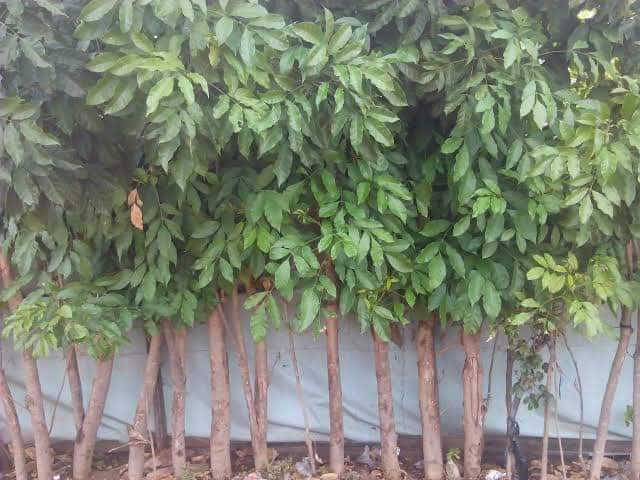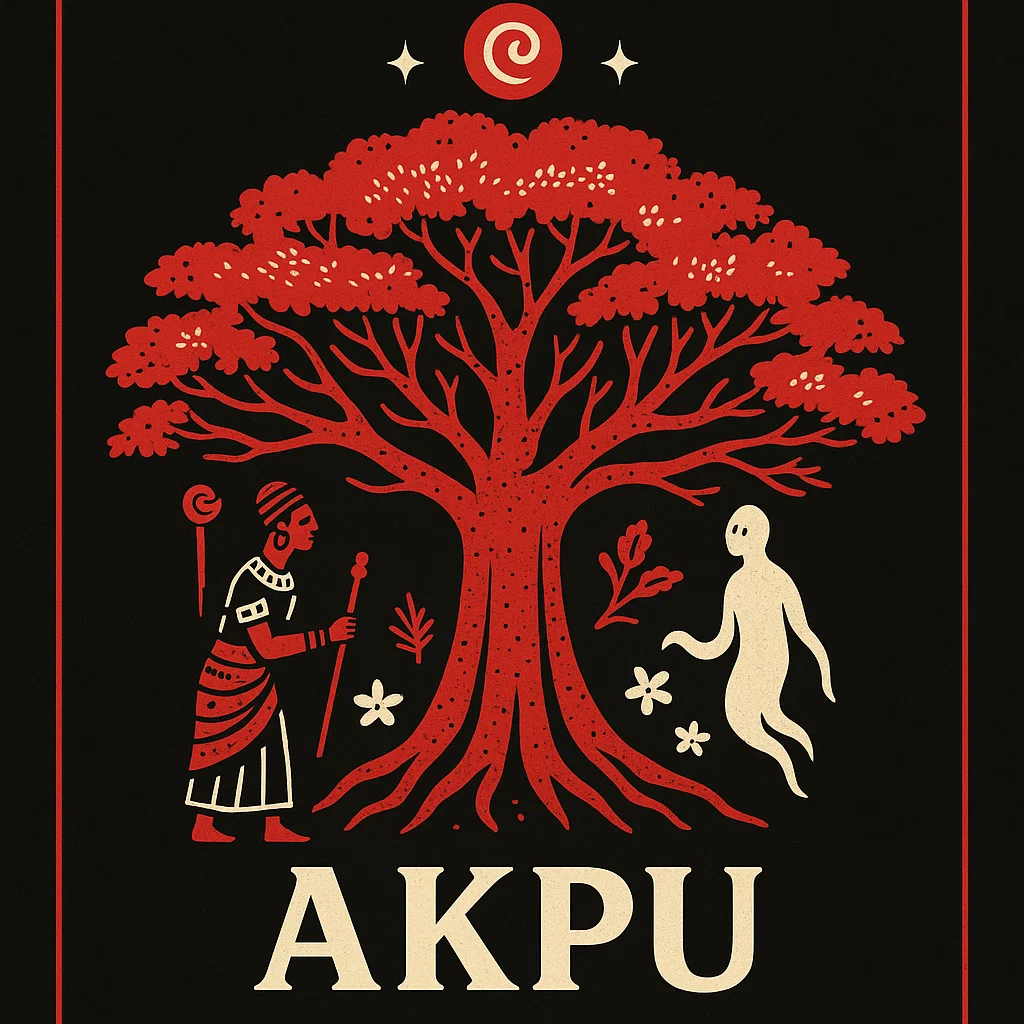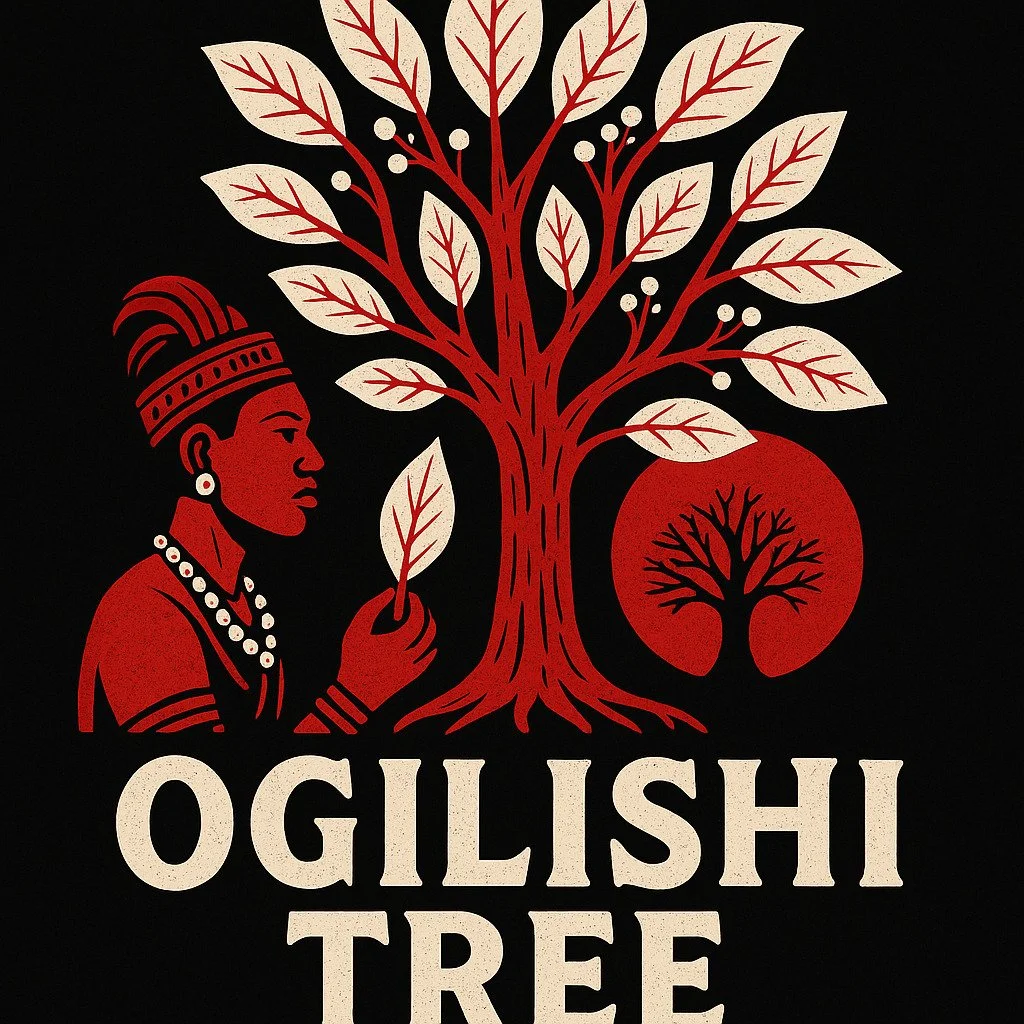Ogilishi Tree in Igbo Tradition and Spirituality
This teaching is set to “Public View,” so anyone with a link can view it. Feel free to share it with others.
Image credit: Wikimedia Commons
Ogilishi (Newbouldia laevis) trees planted closely as a living fence. In Igbo communities, ogilishi (also called ogirisi) is grown around homes and along boundaries for protection.
Ogilishi tree (westernized as Newbouldia laevis), also known as ‘Ogilisi’ or ‘Ogirisi’, is very much revered in Igbo culture. Many Igbo communities consider ogilishi a “tree of life” or “fertility tree.”
In Igbo land, Ogilishi is regarded as a sacred tree and is commonly found in front of (or within) a respected elder or chief’s house as a sign of honor and spiritual protection. Its significance is both physical and metaphysical: the tree provides medicinal remedies and at the same time serves important ritual functions as an anchor between the human world and the spirit realm.
In this teaching, we’ll take a detailed look at Ogilishi’s uses in traditional healing, its roles in spiritual practice, and its cultural symbolism in Igbo tradition.
Medicinal Uses in Traditional Healing
In Igbo traditional medicine, Ogilishi tree is prized as a “wonder plant” with a wide spectrum of healing applications. Dibia Mgborogwu use the leaves, bark, and roots of ogilishi to treat numerous ailments, typically in the form of herbal decoctions, infusions, or powders.
Some of the well-known medicinal uses of Ogilishi in Igbo healing include:
Women’s Health: The leaves of Ogilishi act as a uterine stimulant (oxytocic). Midwives give Ogilishi preparations to expectant mothers to induce or accelerate labor, aid childbirth, and even help expel a retained placenta after delivery. For example, a soup cooked with Ogilishi leaves or bark is in some cases traditionally fed to pregnant women to ease delivery and boost postnatal milk production.
Fertility and Reproductive Care: Beyond aiding labor, the plant is associated with fertility. A decoction of the leaves is sometimes taken by women to address fertility problems. It is also used to stop excessive vaginal bleeding in cases of threatened miscarriage, underlining its role in safeguarding pregnancy and reproductive health.
Pain Relief and Anti-Inflammatory Uses: Ogilishi bark and leaves are used as natural analgesics and anti-inflammatories. Traditional healers prepare them to relieve arthritis, rheumatism, body aches, and other pains. The plant’s extracts have been shown to contain compounds (flavonoids, tannins, saponins, alkaloids) with anti-inflammatory and pain-killing effects.
Digestive Remedies: Ogilishi is a known laxative and gastrointestinal aid. Infusions of the leaves or roots treat constipation, dysentery, and diarrhea, helping to clear the bowels and fight infections in the gut. It is also given for stomach ache and has been used to shrink hemorrhoids (piles) in folk medicine.
Anti-Infective and Antiseptic: The plant has notable antibacterial and antifungal properties. Igbo healers use Ogilishi leaf extracts as eye drops for conjunctivitis and washes for skin infections. The stem bark, when ground and applied, is used to disinfect wounds and treat septic sores. Scientific studies confirm that its bark contains bioactive compounds that inhibit bacteria, validating its traditional use for infections.
Antidote and Detoxifier: Ogilishi leaves are considered an antidote for poisons, venomous bites, and stings. In rural Igbo areas, fresh leaves are crushed and applied to snakebite wounds or drank as a concoction to neutralize venom. Likewise, Ogilishi is believed to counteract ingested poisons or spiritual “poison.”
Neurological and Mental Health: The tree is used to address neurological disorders that traditional culture links with spiritual causes. Epilepsy, convulsions, and spasms in children are treated with ogilishi – the bark and leaves are boiled into a decoction given to patients to calm seizures. It is also used for paralysis and even to manage insanity or manic episodes (which in older times might be attributed to spiritual attack). These uses highlight the overlap between healing and spirituality in Igbo culture, where a medicinal cure is also a spiritual remedy.
Other Remedies: Various other uses are recorded across Igbo land. Ogilishi has been used for malaria and fever (in combination with other herbs), for toothaches (as a gargle), for headaches and sinus issues (the bark is boiled and the steam or a head pad is applied), and even in veterinary medicine to improve appetite of horses. Its versatility ranges from treating skin infections and wounds to managing diabetes and hypertension.
In summary, Ogilishi is deeply integrated into Igbo traditional healing. It is typically one of the first plants a Dibia will consider for a wide array of ailments.
Ritual and Metaphysical Roles
Beyond its medicinal value, Ogilishi tree plays powerful metaphysical and ritual roles in Igbo spirituality. In Odinani, certain trees carry strong spiritual potency and serve as intermediaries between the physical and spiritual realms.
Ogilishi is one such sacred tree, employed by priests, oracles, and household elders in various spiritual capacities. Key ritual roles of Ogilishi include protection, purification, serving as a shrine or altar, and aiding divination and spirit communication.
Warding off Evil and Marking Boundaries
In Igbo communities, Ogilishi is famously known for its protective aura. It is well known and believed to repel negative energies and evil people, and conversely, those with ill intent instinctively avoid areas where this tree stands. For this reason, it became common practice to plant Ogilishi trees around homesteads as a living fence.
Fences and hedges of Ogilishi do not only serve as physical barriers but also as spiritual fortifications for the household. Igbo oral tradition holds that “witches” or malevolent spirits cannot easily cross an Ogilishi barrier, so having this tree on one’s property brings peace of mind.
Another protective role is seen in boundary demarcation. From ancient times, Igbos have used Ogilishi to mark the edges of land holdings. When a family’s land was partitioned or a new parcel acquired, cuttings of ogilishi would be planted at each corner or along the border of the plot. Generations later, if any dispute arose over land, the presence of an old Ogilishi line would be used as evidence of the original limits.
This practice helped prevent conflicts among kindred. In some areas, people also planted Ogilishi at the entrance of a village or sacred grove as a sign that the area is spiritually protected.
Purification and Cleansing Rites
Hand-in-hand with protection, Ogilishi plays a role in spiritual purification. The leaves are considered sacred and are used to cleanse people of ritually unclean or negative influences.
A common ritual involves soaking fresh ogilishi leaves in water, ideally rainwater or spring water, to create a purifying wash. A Dibia may prescribe this bath for someone who has been in contact with death, evil, or taboo. For instance, after burying a corpse, Igbo custom requires the grave diggers and funeral attendants to undergo cleansing; they will wash their hands and feet in water infused with Ogilishi leaves to purify themselves of the “death aura”.
Ogilishi leaves can also be burned or boiled to purify an environment. People boil the leaves and inhale the steam or fumes as a spiritual cleanse, a practice that is believed to be able to clear one’s head of evil thoughts and even induce visionary dreams. This is done under guidance of spiritual practitioners or a Dibia for those seeking messages from the spirit world or guidance from ancestors through dreams.
Sprinkling an infusion of Ogilishi around a house or farm is also thought to sanctify the space, driving away occult mischief and making sure only benevolent forces dwell there. In essence, Ogilishi functions as a holy water of sorts in Igbo ritual life.
Ogilishi in Shrines, Altars, and Sacrifice
In many Igbo communities, it is common to find an Ogilishi tree standing near local shrines or family altars/compounds, demonstrating its role as a sacred fixture. During sacrifices or certain ritual offering rites, Ogilishi leaves serve as a physical base for other sacred objects or items.
In some communities, before an important ritual item like the Ofo staff (symbol of truth and authority) is placed on the ground, a mat of Ogilishi leaves is spread for it. The Ogilishi leaves are believed to sanctify the spot. In fact, if a person does not own a traditional Ofo stick, four stem cuttings of Ogilishi tied together can be used temporarily in place of an Ofo during invocations or oath-taking. This highlights how Ogilishi wood is seen as inherently sacred and imbued with spiritual legitimacy, enough to substitute for other ritual symbols.
It is also worth noting that Ogilishi wood is never cut down carelessly in the traditional setting. As with other sacred trees, felling an Ogilishi tree required performing appeasement rites, because the tree’s spirit and the deities associated with it must be respected.
In many Igbo communities, there was a taboo against cutting down an old Ogilishi tree except for important use, and doing so without permission could invite spiritual retribution. The tree was treated as a member of the community. This attitude ensured that Ogilishi groves near shrines were protected by custom and remained living monuments of Igbo faith.
Ogilishi, Dibia, and Agwu
One aspect that cannot be left out is the spiritual connection of Ogilishi tree with Agwu, the Igbo deity of divination, healing, and mystical knowledge. Agwu is regarded as the patron spirit of Dibias, and Ogilishi is one of Agwu’s sacred plants.
In Igbo traditional belief, when a person is chosen by Agwu to become a healer or seer, they might undergo a challenging period of confusion or illness attributed to Agwu. The resolution of this crisis often involves a ceremony of acceptance and pacification of Agwu, in which Ogilishi plays a key role.
During the rites of Iru/Ilu Agwu (the pacification or initiation rites of Agwu), two saplings are central: Oha and Ogilishi. In most cases, these two young trees are ritually planted for the initiate. The planting symbolizes the person’s new covenant with the spirit world – the Oha represents the person’s Chi and the maternal lineage, while the Ogilishi represents the presence of Agwu and the protection of ancestors.
The initiate in such cases must water and tend to these saplings diligently so that they do not die, for the thriving of the Oha and Ogilishi trees is believed to ensure the individual’s own well-being and success in their spiritual vocation. If either tree withers, it is taken as a bad omen regarding the person’s harmony with their spiritual forces. This practice illustrates how Ogilishi is literally cultivated as a living link to the divine patron of healing arts.
Cultural and Symbolic Significance
Ogilishi tree’s influence is woven into the cultural imagination, symbols, and taboos of Igbo society. As one of the foremost sacred trees of Igbos, Ogilishi embodies concepts of life, continuity, and spiritual harmony that are central to Igbo worldview.
Symbol of Life and Continuity: Like other revered trees, Ogilishi symbolizes the continuity between the earthly and the divine. Its evergreen nature and popularized ability to remain alive after cutting make it a emblem of immortality and longevity. This is why Ogilishi is called the “tree of life.” In a spiritual sense, the tree’s ability to regenerate represents the rebirth of souls and the ongoing presence of ancestors among the living. It is believed that ancestral spirits can dwell in or visit an Ogilishi tree, safeguarding the family that planted it. Cutting such a tree is unthinkable without strong cause, as it would be like severing a link to one’s ancestry.
Community Ceremonies and Taboos: Ogilishi‘s presence signals purity and approval of one’s ancestors. Felling or burning a sacred Ogilishi was (and still is) taboo in many Igbo communities, unless ritually sanctioned. Climbing the tree for non-ritual reasons or plucking large quantities of leaves without permission could be seen as courting spiritual danger. There are folktales that warn of dire consequences for those who desecrate an Ogilishi. Such narratives reinforce the respect and fear this tree commands, to make sure it is preserved for posterity.
Folklore and Oral Wisdom: Ogilishi is referenced in Igbo folklore, songs, and proverbs. Proverbs like “Ogirisi anwughị anwu” meaning “Ogirisi does not die,” highlight its hardiness and encourage perseverance in the face of challenges (just as the tree endures, so should each person). Another proverb states, “Ndi ajo obi anaghi efe ogirisi”, roughly meaning “evil-hearted people do not circumambulate (or patronize) Ogirisi.” In other words, evil cannot withstand the aura of ogilishi, and those with bad intentions avoid just and spiritually fortified places (here symbolized by the ogilishi tree). This bit of folk wisdom captures the community’s trust of Igbos in Ogilishi as a guardian.
Finally, Ogilishi’s dual identity as both medicine and spiritual medium reinforces a core principle of Igbo cosmology: the health of the body and the health of the spirit are interconnected. The tree stands at this crossroads as a cultural symbol of protection, purity, fertility, and the enduring presence of ancestry.
Conclusion
Ogilishi tree occupies a unique and exalted position in Igbo tradition and spirituality. It is a healer of illnesses, employed by traditional medicine practitioners for countless remedies. It is a guardian and purifier, encircling homes and altars with an invisible shield against evil. It is a spiritual tool and symbol, central to rituals of divination, ancestral veneration, and covenant-making. And it is a cultural icon, woven into the fabric of Igbo ceremonies, taboos, and folklore as a representation of life’s sanctity and the bond between the community and the spirit world.
Frequently Asked Questions
-
Yes, indeed. In many Igbo communities, it is believed that Ogilishi can spontaneously sprout in the compounds of those who are spiritually marked, such as traditional chiefs, Dibia (healers/diviners), priests, or lineage heads.
-
In traditional practice, Ogilishi leaves are commonly used as a sacred platform or physical based to present offerings to one’s Chi or Chi Uwa.
-
In Igbo spiritual worldview, sacred trees like Ogilishi are living intelligences—conscious, responsive, and deserving of respect. Before harvesting any part of the tree, especially for ritual or spiritual use, you should take a moment to engage with it—either vocally or intuitively. State your intentions clearly, ask for its permission and blessing, and approach it with reverence. This small act of acknowledgment honors the spirit of the tree and can greatly increase the spiritual potency or effectiveness of whatever work you are undertaking.




